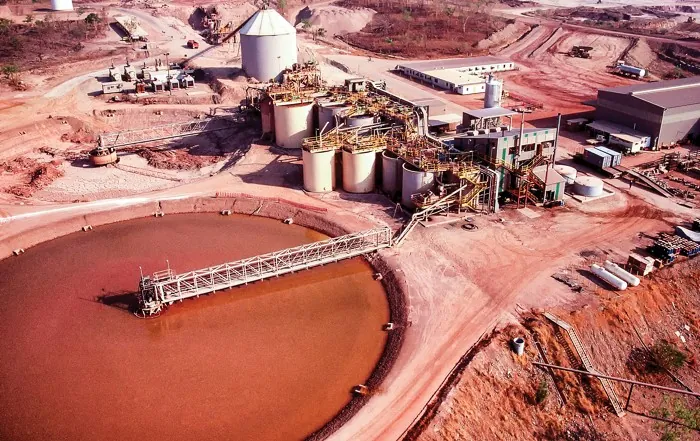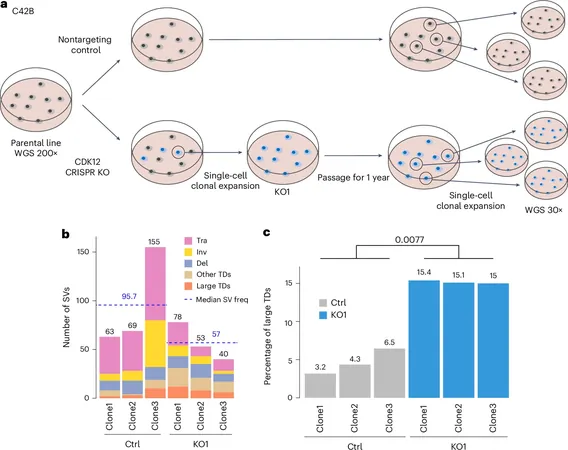
Groundbreaking DOE Initiative Aims to Transform Wastewater into Valuable Resources with $36 Million Funding!
2024-11-21
Author: Ming
Wastewater is often viewed as a nuisance, filled with pollutants and harmful byproducts, but recent developments indicate that it holds a treasure trove of valuable chemicals. When improperly managed, these chemicals can pose significant environmental threats; however, when extracted properly, they can enhance domestic supply chains and significantly reduce our reliance on environmentally damaging resources.
In a bold move, the U.S. Department of Energy (DOE) has announced an incredible $36 million funding opportunity aimed at harnessing the power of wastewater. This initiative, managed by the Advanced Research Projects Agency-Energy (ARPA-E), is dubbed the Realize Energy-rich Compound Opportunities Valorizing Extraction from Refuse Waters (RECOVER). The program's goal? To revolutionize how we view and utilize wastewater.
The RECOVER program aims to replace 50% of conventional ammonia supplies in the United States, as stated by program director Charles Werth. Additionally, it seeks to decrease our dependence on imports of 25 critical metals. “The materials that we’re trying to recover from wastewater are essential to the energy landscape,” Werth emphasizes.
Annually, the U.S. consumes around 15 million metric tons of ammonia, primarily as fertilizer. The traditional method for ammonia production, the Haber-Bosch process, is energy-intensive and produces a staggering 2 tons of CO2 for each ton of ammonia generated. “If we can recover ammonia from waste streams, we can potentially offset substantial amounts of energy use and CO2 emissions,” Werth adds.
Moreover, the targeted critical metals, which the U.S. predominantly imports, are vital for various technologies, including renewable energy systems and electronics. “Finding new sources of these metals is crucial for bolstering U.S. energy independence,” he insists.
The DOE is inviting innovative proposals utilizing a range of technologies—novel adsorbents, membranes, biomolecules, and electrochemical cells—that can selectively extract ammonia or specific metal cations from wastewater. The Department hopes to attract a diverse group of applicants, including academic researchers, startups, and national laboratories.
Time is of the essence for this initiative. Concept papers are due by the end of December, while full proposals must be submitted by the end of January. ARPA-E aims to finalize award contracts by September 2025. “We’re looking for groundbreaking ideas from a range of disciplines—chemists, material scientists, and engineers,” states Werth. “Collaboration and diverse skill sets are key to developing innovative solutions.”
If successful, the RECOVER program could significantly impact sustainability, energy consumption, and the development of the U.S. economy. The movement towards recycling wastewater not only promises to tackle pollution but also unlocks new avenues for economic growth and energy independence. Stay tuned as we watch how this initiative unfolds and redefines resource recovery from one of our most underestimated waste streams!



 Brasil (PT)
Brasil (PT)
 Canada (EN)
Canada (EN)
 Chile (ES)
Chile (ES)
 España (ES)
España (ES)
 France (FR)
France (FR)
 Hong Kong (EN)
Hong Kong (EN)
 Italia (IT)
Italia (IT)
 日本 (JA)
日本 (JA)
 Magyarország (HU)
Magyarország (HU)
 Norge (NO)
Norge (NO)
 Polska (PL)
Polska (PL)
 Schweiz (DE)
Schweiz (DE)
 Singapore (EN)
Singapore (EN)
 Sverige (SV)
Sverige (SV)
 Suomi (FI)
Suomi (FI)
 Türkiye (TR)
Türkiye (TR)